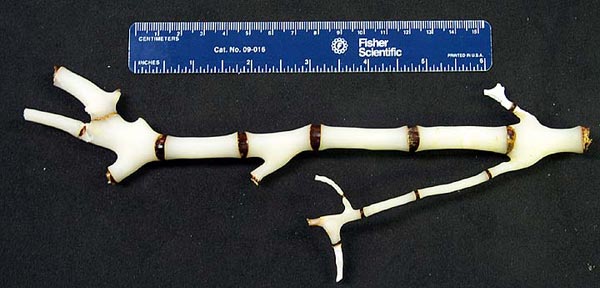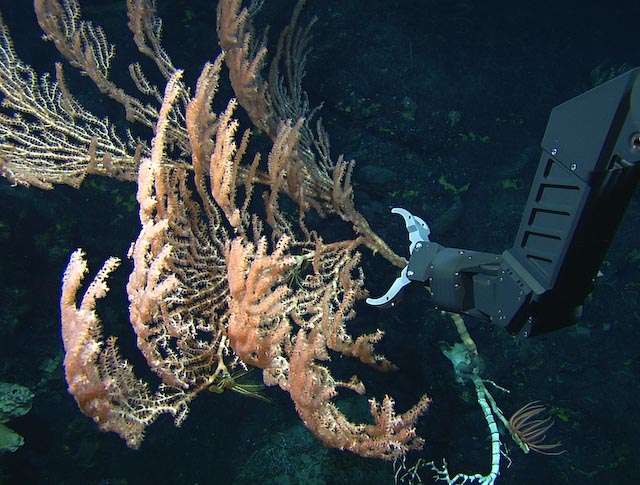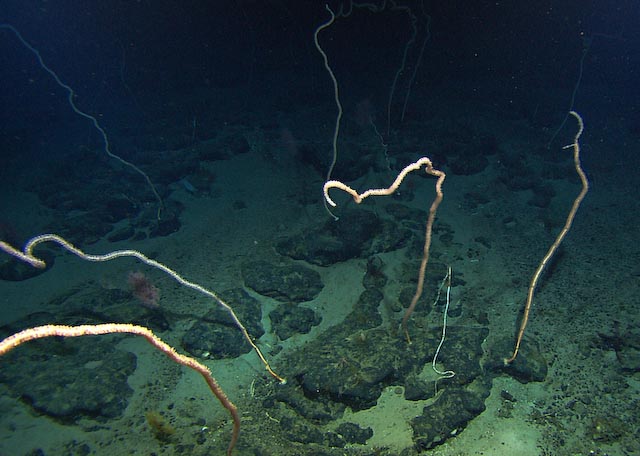
A portion of a colony - shown at right in situ - of Isidella sp. showing branching at the nodes. In this case the overall colony morphology is planar (compare to bushy Acanella, below). (Image copyright of the Deep Atlantic Stepping Stones Research Team; IFE-URI; and NOAA)

Isidella sp. at 1815 meters depth on Balanus Seamount. (Image copyright of the Deep Atlantic Stepping Stones Research Team; IFE-URI; and NOAA)

Isidella sp. at 1889 meters depth on Balanus Seamount. (Image copyright of the Deep Atlantic Stepping Stones Research Team; IFE-URI; and NOAA)

Acanella cf. eburnea at 1316 meters depth on Caloosahatchee Seamount. Note the root-like holdfast extending into the soft substrate. (Image copyright of the Deep Atlantic Stepping Stones Research Team; IFE-URI; and NOAA)






